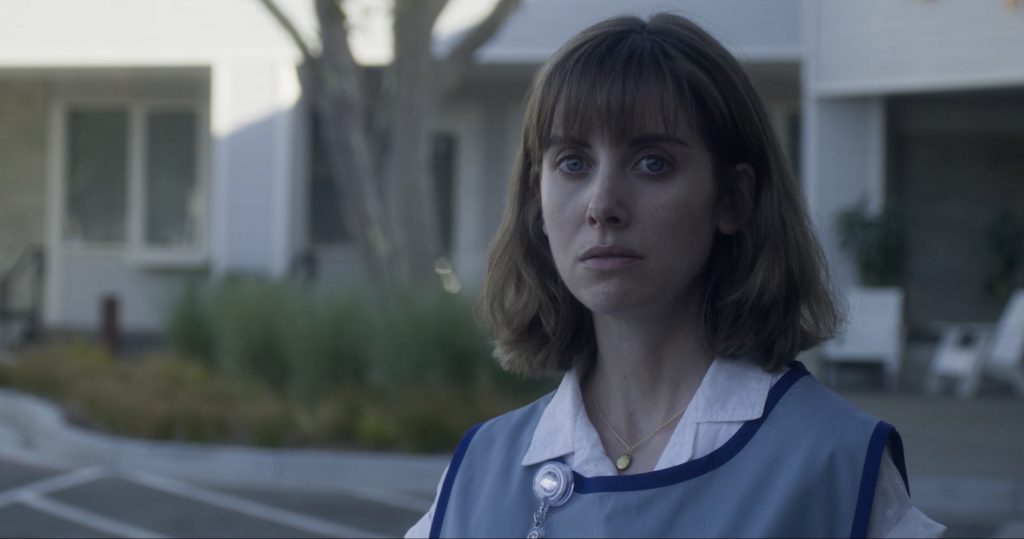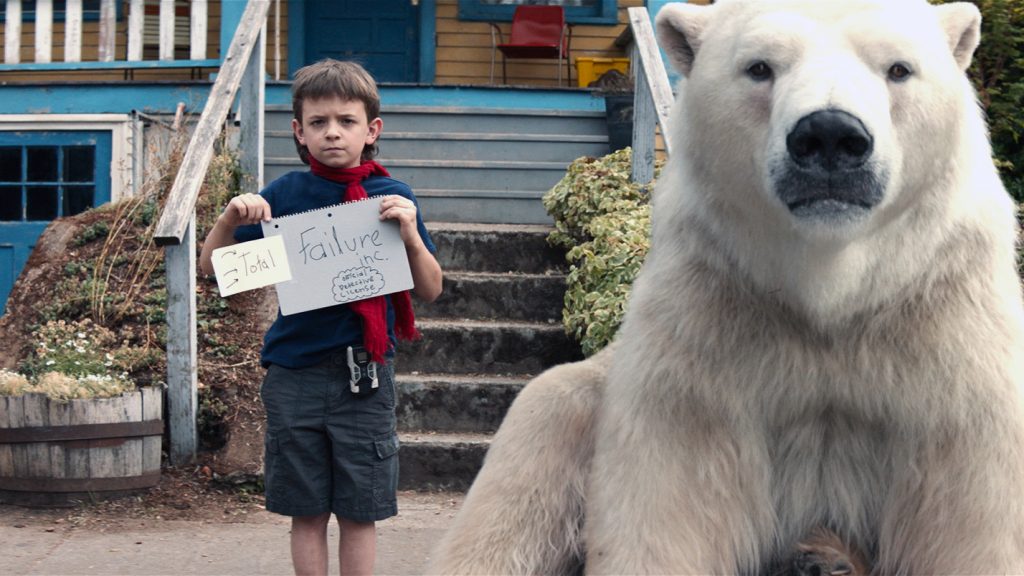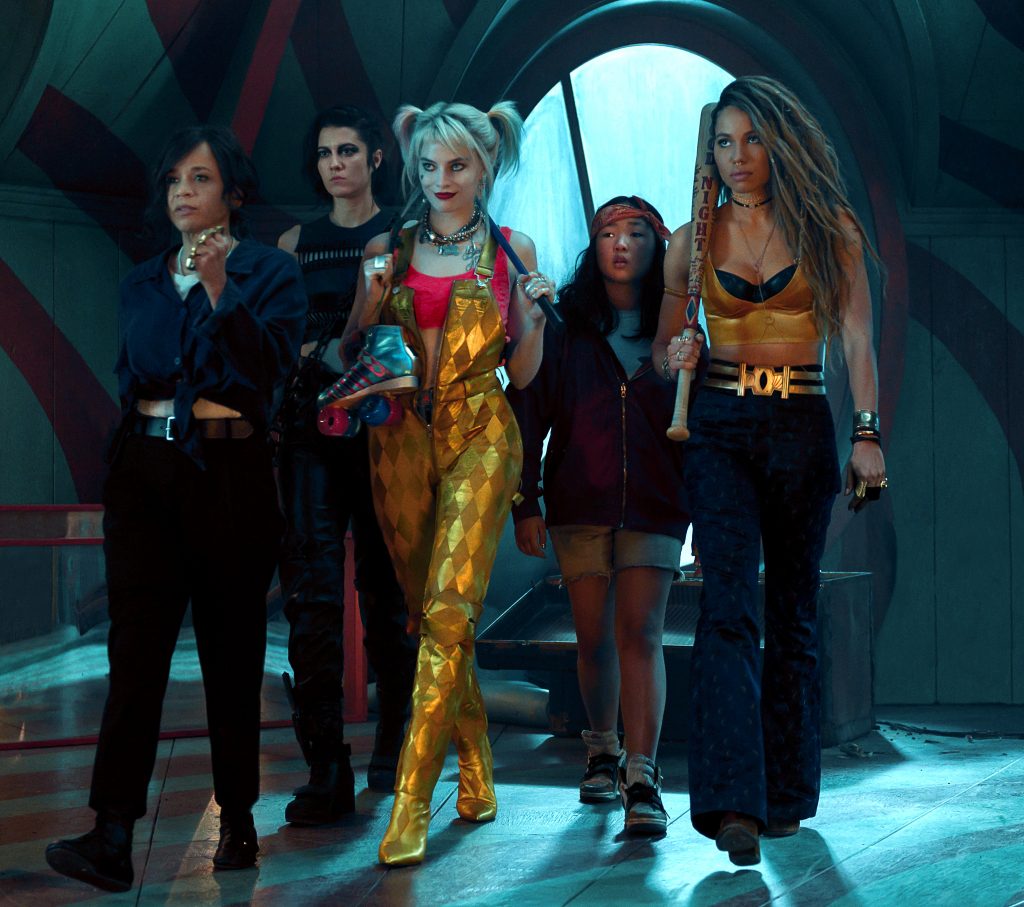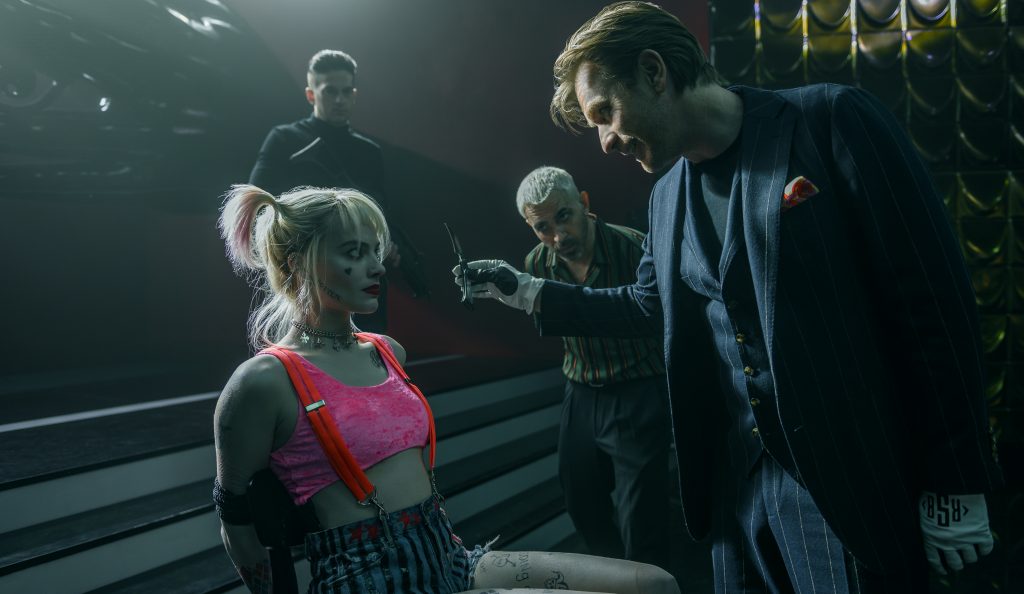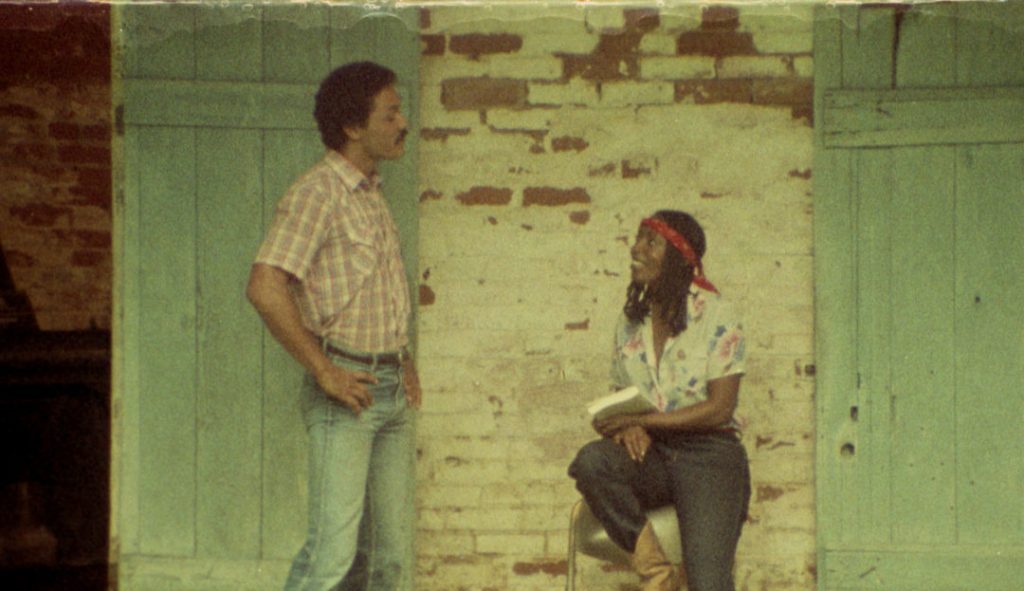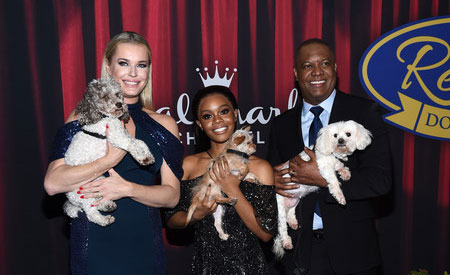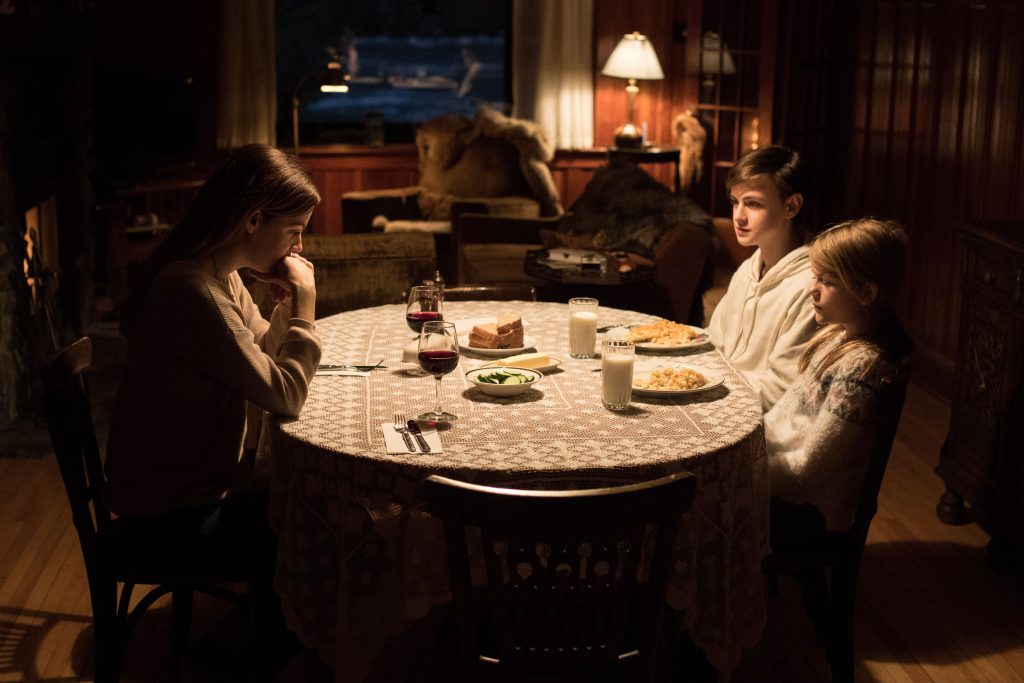February 9, 2020
by Carla Hay
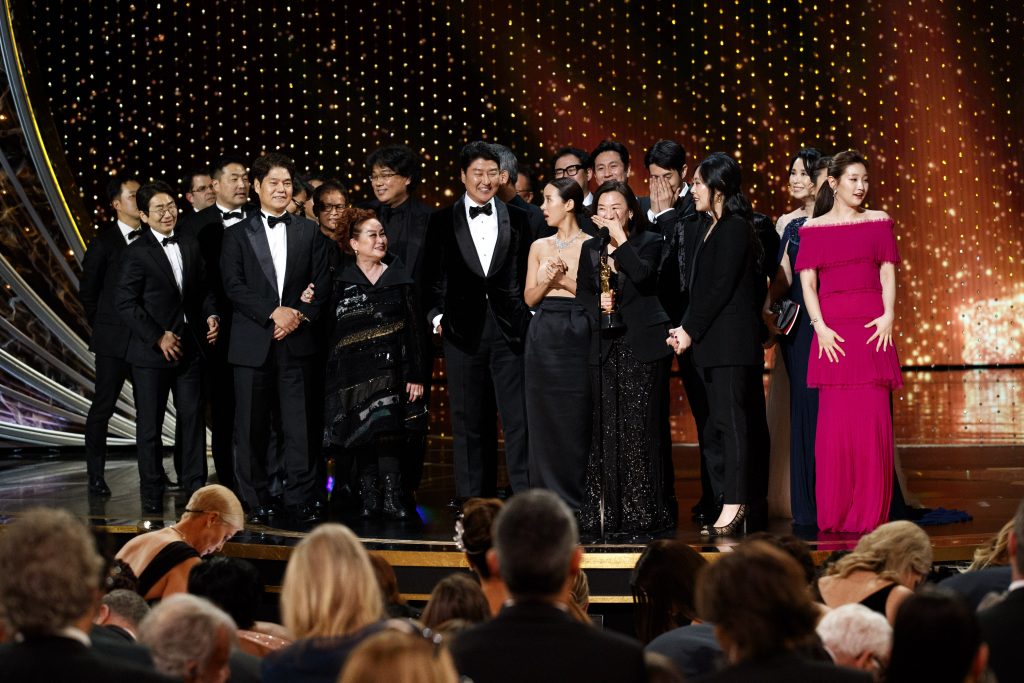
As the first non-English-language film to win the Oscar for Best Picture, the South Korean drama “Parasite” made Oscar history at the 92nd Annual Academy Awards, which took place at the Dolby Theatre in Los Angeles on February 9, 2020. ABC had the U.S. telecast of the show. “Parasite,” which takes a scathing look at the class and social divisions between those who are wealthy and those who are not, also won the Oscars for Best Director (for Bong Joo Ho), Best Original Screenplay and Best International Feature Film.
“Parasite” is the first movie since 2008’s “Slumdog Millionaire” to win Best Picture without any nominations in the actor/actress categories. It’s also the first time that Asian filmmakers have won in the categories for Best Picture and Best Original Screenplay. In addition, “Parasite” is the first movie to win the Oscars for Best International Feature (formerly titled Best Foreign-Language Film) and Best Picture in the same year. “Parasite” is also the first South Korean film to be nominated for Best International Feature and for Best Picture. Leading up to its Academy Awards victories, “Parasite” won the most awards of any movie released in 2019, including the Palme d’Or (the top prize) at the 2019 Cannes Film Festival, where the movie had its world premiere.
Oscar winners in the acting categories were Joaquin Phoenix of “Joker” for Best Actor; Renée Zellweger of “Judy” for Best Actress; Brad Pitt of “Once Upon a Time in Hollywood” for Best Supporting Actor; and Laura Dern of “Marriage Story” for Best Supporting Actress. Phoenix, Zellweger, Pitt and Dern been winning prizes in these categories at other major awards shows this season. Phoenix is the second actor to win an Oscar for playing DC Comics villain The Joker. Heath Ledger won a posthumous Oscar for his Joker performance in 2008’s “The Dark Knight.”
With 11 Oscar nominations, “Joker” was the leading contender going into the ceremony, and the movie ended up winning two: In addition to Best Actor, “Joker” also won for Best Original Score. The World War I drama “1917” won three Oscars—all in the technical categories: Best Cinematography, Best Sound Mixing and Best Visual Effects. The 1960s auto-racing drama “Ford v Ferrari” was also a multiple Oscar winner, taking two: Best Film Editing and Best Sound Editing. The mobster drama “The Irishman,” which had 10 Oscar nominations, ended up winning no Academy Awards, in the biggest shut-out of the ceremony.
For the second year in a row, there was no host for the Oscar ceremony. The show opened with a performance by Janelle Monáe doing a version of the “Mr. Rogers’ Neighborhood” theme, before being joined by Billy Porter on stage for Elton John’s “I’m Still Standing” and then going solo again for the rest of the performance.
There were no controversial publicity stunts or major errors. A few of the Oscar winners—particularly Pitt and Phoenix—expressed their opinions about political and social issues during their acceptance speeches. Pitt made it clear how he felt about the result of President Donald Trump’s impeachment trial, which ended February 5 with the majority of the U.S. Senate acquitting Trump. Pitt said: “They told me I only had 45 seconds this year, which is 45 seconds more than the Senate gave [proposed trial witness] John Bolton this week. I’m thinking maybe Quentin [Tarantino] does a movie about it. In the end, the adults do the right thing.”
Phoenix (a longtime animal-rights activist and environmentalist) spoke out about the need for people to go vegan and to have more respect for the earth’s natural resources: “We go into the natural world, and we plunder it for its resources … But human beings, at our best, are so inventive and creative and ingenious, and I think that when we use love and compassion as our guiding principles, we can create, develop and implement systems of change that are beneficial to all sentient beings and to the environment.”
One of the ceremony’s biggest surprises was Eminem performing his Oscar-winning song “Lose Yourself” from the 2002 movie “8 Mile,” with his on-stage performance serving as a transition from a tribute montage about how songs can transform movies. When Eminem won the Oscar in 2003, he did not attend the ceremony, so this performance (which had many censor “bleeps”) took place 17 years after it could have first happened.
Elton John, Cynthia Erivo, Idina Menzel, Chrissy Metz and Randy Newman each performed their Oscar-nominated tunes for Best Original Song. The Oscar went to John and his longtime songwriting partner Bernie Taupin for “(I’m Gonna) Love Me Again” from the Elton John musical biopic “Rocketman.” Meanwhile, Billie Eilish performed the Beatles classic “Yesterday” for the “In Memoriam” tribute segment dedicated to people in the movie industry who passed away since the previous Oscar ceremony.
In addition, the show featured a special appearance by Questlove. Eímear Noone did a guest-conductor segment for all the hyear’s Oscar-nominated film scores. She was the first woman to conduct during an Oscars telecast.
Presenters included, Mahershala Ali, Utkarsh Ambudkar, Zazie Beetz, Timothée Chalamet, Olivia Colman, James Corden, Penélope Cruz, Beanie Feldstein, Will Ferrell, Jane Fonda, Gal Gadot, Zack Gottsagen, Salma Hayek, Mindy Kaling, Diane Keaton, Regina King, Shia LaBeouf, Brie Larson, Spike Lee, Julia Louis-Dreyfus, George MacKay, Rami Malek, Steve Martin, Lin-Manuel Miranda, Ray Romano, Anthony Ramos, Keanu Reeves, Chris Rock, Maya Rudolph, Mark Ruffalo, Kelly Marie Tran, Sigourney Weaver, Kristen Wiig and Rebel Wilson.
Here is the complete list of winners and nominations for the 2020 Academy Awards:
*=winner
Best Picture

“Ford v Ferrari”
Producers: Peter Chernin, Jenno Topping and James Mangold
“The Irishman”
Producers: Martin Scorsese, Robert De Niro, Jane Rosenthal and Emma Tillinger Koskoff
“Jojo Rabbit”
Producers: Carthew Neal and Taika Waititi
“Joker”
Producers: Todd Phillips, Bradley Cooper and Emma Tillinger Koskoff
“Little Women”
Producer: Amy Pascal
“Marriage Story”
Producers: Noah Baumbach and David Heyman
“1917”
Producers: Sam Mendes, Pippa Harris, Jayne-Ann Tenggren and Callum McDougall
“Once Upon a Time in Hollywood”
Producers: David Heyman, Shannon McIntosh and Quentin Tarantino
“Parasite”*
Producers: Kwak Sin Ae and Bong Joon Ho
Best Actor
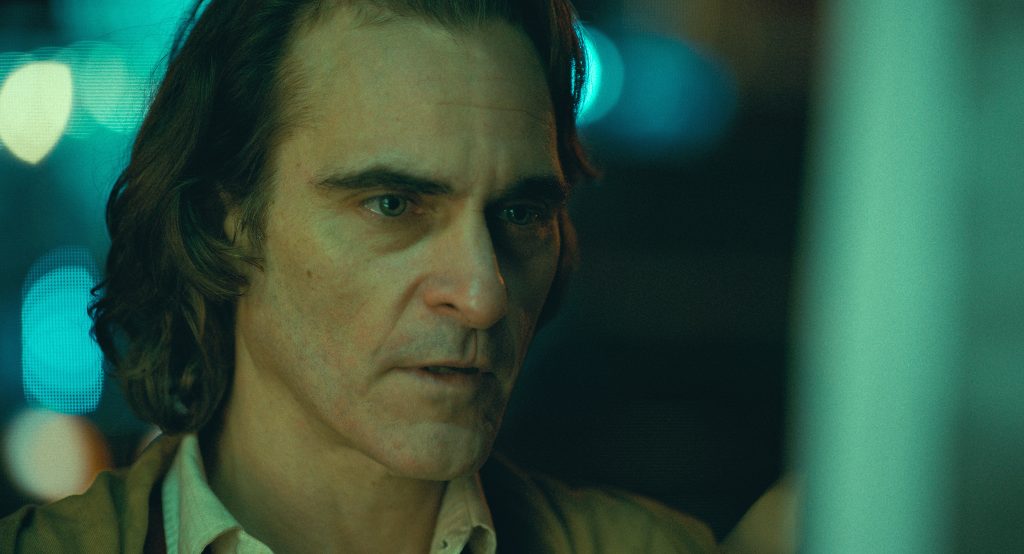
Antonio Banderas, “Pain and Glory”
Leonardo DiCaprio, “Once Upon a Time in Hollywood”
Adam Driver, “Marriage Story”
Joaquin Phoenix, “Joker”*
Jonathan Pryce, “The Two Popes”
Best Actress

Cynthia Erivo, “Harriet”
Scarlett Johansson, “Marriage Story”
Saoirse Ronan, “Little Women”
Charlize Theron, “Bombshell”
Renee Zellweger, “Judy”*
Best Supporting Actor

Tom Hanks, “A Beautiful Day in the Neighborhood”
Anthony Hopkins, “The Two Popes”
Al Pacino, “The Irishman”
Joe Pesci, “The Irishman”
Brad Pitt, “Once Upon a Time in Hollywood”*
Best Supporting Actress

Kathy Bates, “Richard Jewell”
Laura Dern, “Marriage Story”*
Scarlett Johansson, “Jojo Rabbit”
Florence Pugh, “Little Women”
Margot Robbie, “Bombshell”
Best Director
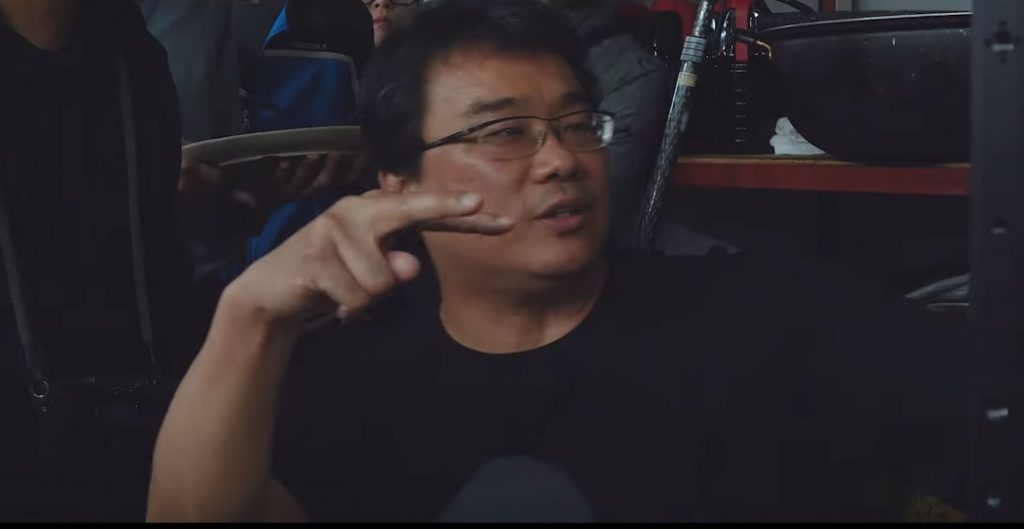
Martin Scorsese, “The Irishman”
Todd Phillips, “Joker”
Sam Mendes, “1917”
Quentin Tarantino, “Once Upon a Time in Hollywood”
Bong Joon Ho, “Parasite”*
Best Animated Feature
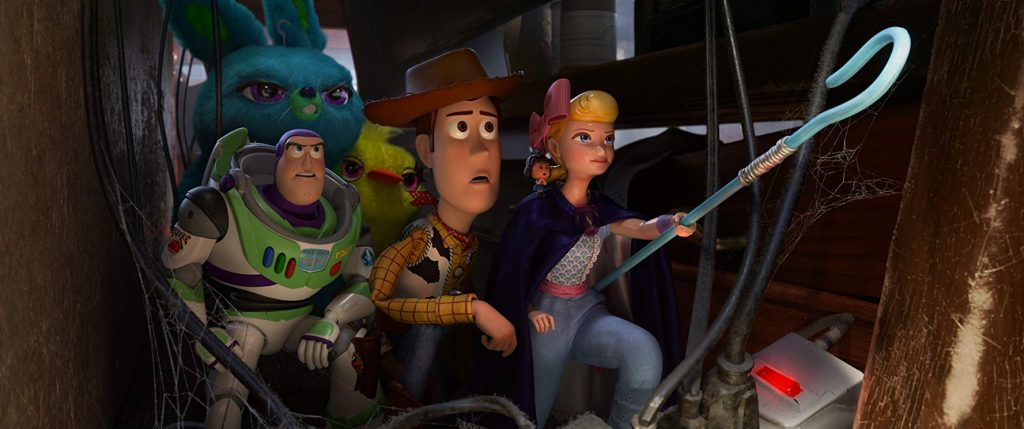
“How to Train Your Dragon: The Hidden World,” directed by Dean DeBlois; produced by Bradford Lewis and Bonnie Arnold
“I Lost My Body,” directed by Jérémy Clapin; produced by Marc du Pontavice
“Klaus,” directed and produced by Sergio Pablos; produced by Jinko Gotoh and Marisa Román
“Missing Link,” directed by Chris Butler; produced by Arianne Sutner and Travis Knight
“Toy Story 4,” directed by Josh Cooley; produced by Mark Nielsen and Jonas Rivera*
Best Animated Short
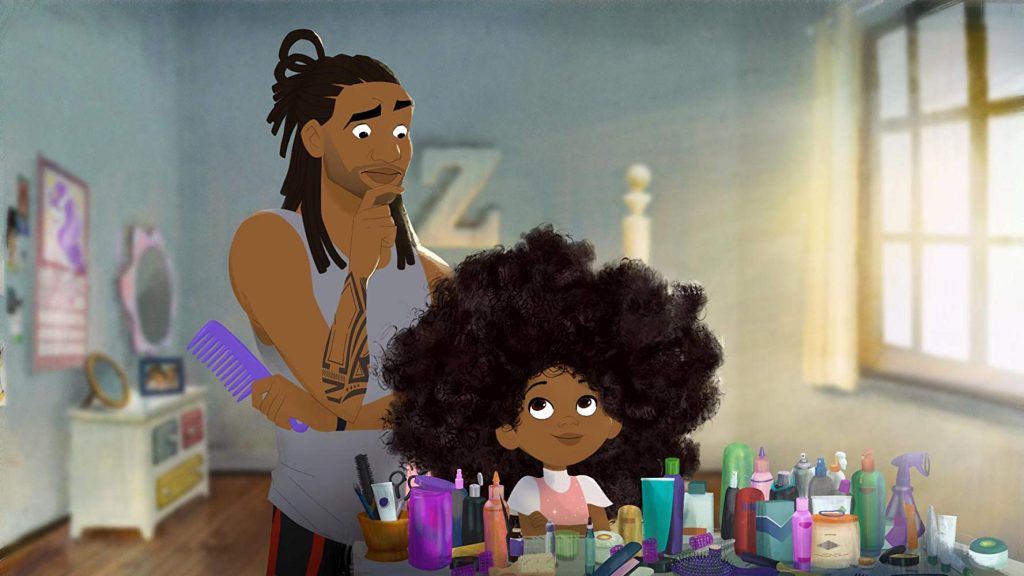
“Dcera,” directed and produced by Daria Kashcheeva
“Hair Love,” directed and produced by Matthew A. Cherry; produced by Karen Rupert Toliver*
“Kitbull,” directed by Rosana Sullivan; produced by Kathryn Hendrickson
“Memorable,” directed by Bruno Collet; produced by Jean-François Le Corre
“Sister,” directed and produced by Siqi Song
Best Adapted Screenplay

“The Irishman,” Steven Zaillian
“Jojo Rabbit,” Taika Waititi*
“Joker,” Todd Phillips, Scott Silver
“Little Women,” Greta Gerwig
“The Two Popes,” Anthony McCarten
Best Original Screenplay

“Knives Out,” Rian Johnson
“Marriage Story,” Noah Baumbach
“1917,” Sam Mendes and Krysty Wilson-Cairns
“Once Upon a Time in Hollywood,” Quentin Tarantino
“Parasite,” Bong Joon-ho and Jin Won Han*
Best Cinematography
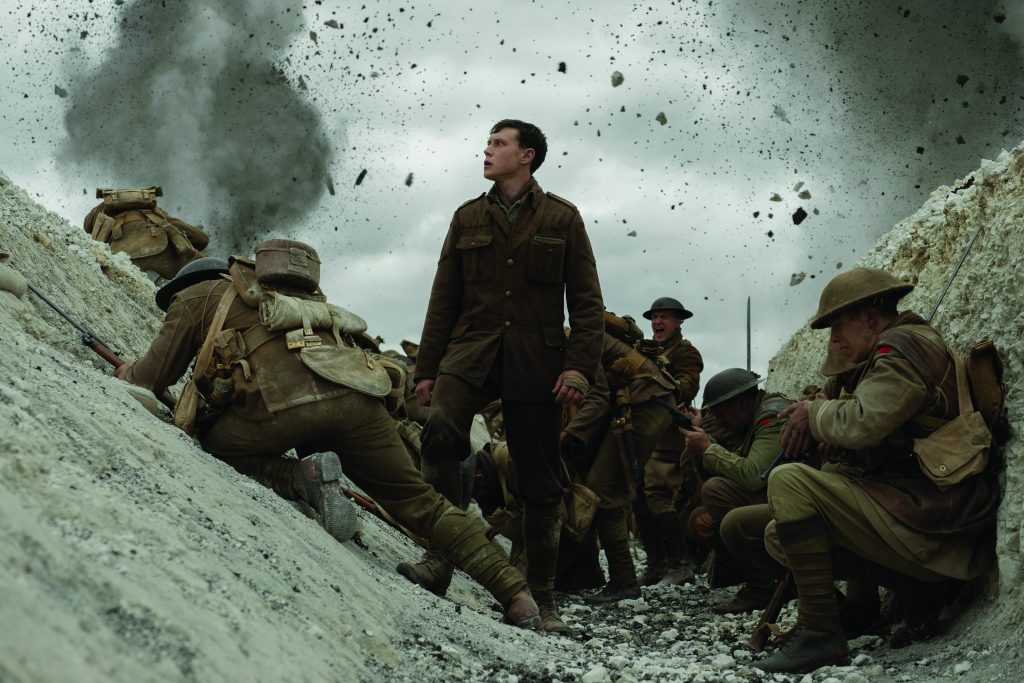
“The Irishman,” Rodrigo Prieto
“Joker,” Lawrence Sher
“The Lighthouse,” Jarin Blaschke
“1917,” Roger Deakins*
“Once Upon a Time in Hollywood,” Robert Richardson
Best Documentary Feature

“American Factory,” directed and produced by Julia Rieichert and Steven Bognar; produced by Jeff Reichert*
“The Cave,” directed by Feras Fayyad; produced by Kirstine Barfod and Sigrid Dyekjær
“The Edge of Democracy,” directed and produced by Petra Costa; produced by Joanna Natasegara, Shane Boris and Tiago Pavan
“For Sama,” directed and produced by Waad Al-Kateab; directed by Edward Watts
“Honeyland,” directed by Tamara Kotevska and Ljubo Stefanov; produced by Atanas Georgiev
Best Documentary Short Subject
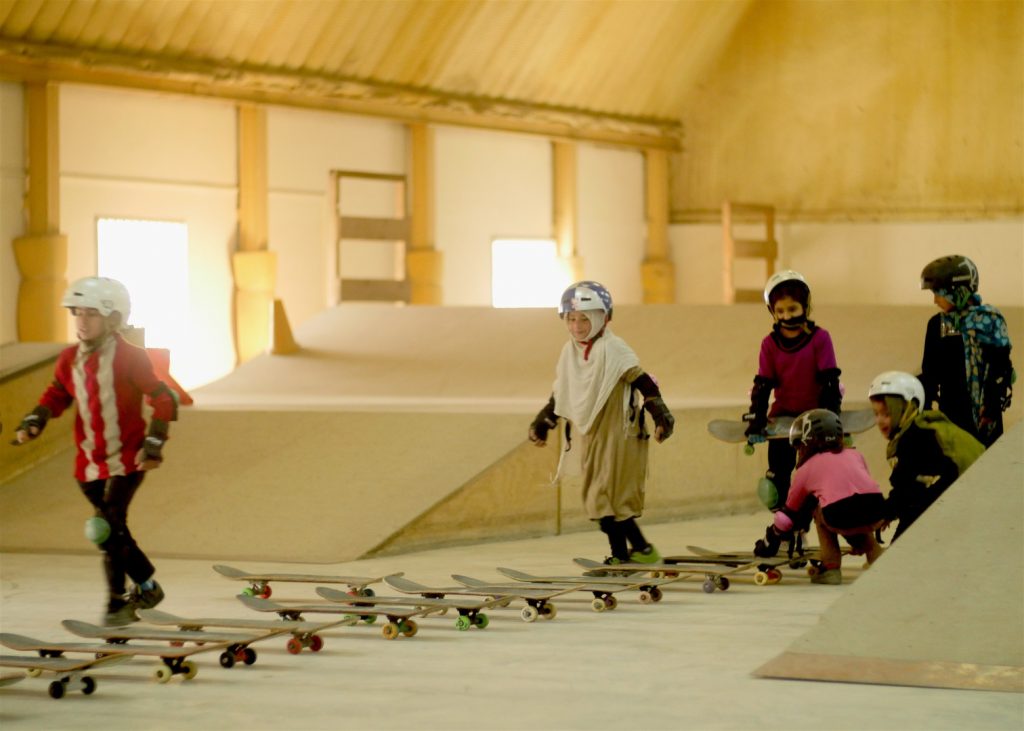
“In the Absence,” directed and produced by Yi Seung-Jun; produced by Gary Byung-Seok Kam
“Learning to Skateboard in a Warzone (If You’re a Girl),” directed by Carol Dysinger; produced by Elena Andreicheva*
“Life Overtakes Me,” directed and produced by Kristine Samuelson; directed by John Haptas
“St. Louis Superman,” directed and produced by Smriti Mundhra and Sami Khan
“Walk Run Cha-Cha,” directed by Laura Nix; produced by Colette Sandstedt
Best Live Action Short Film

“Brotherhood,” directed and produced by Meryam Joobeur; produced by Maria Gracia Turgeon
“Nefta Football Club,” directed and produced by Yves Piat; produced by Damien Megherbi
“The Neighbors’ Window,” directed and produced by Marshall Curry*
“Saria,” directed by Bryan Buckley; produced by Matt Lefebvre
“A Sister,” directed and produced by Delphine Girard
Best International Feature Film
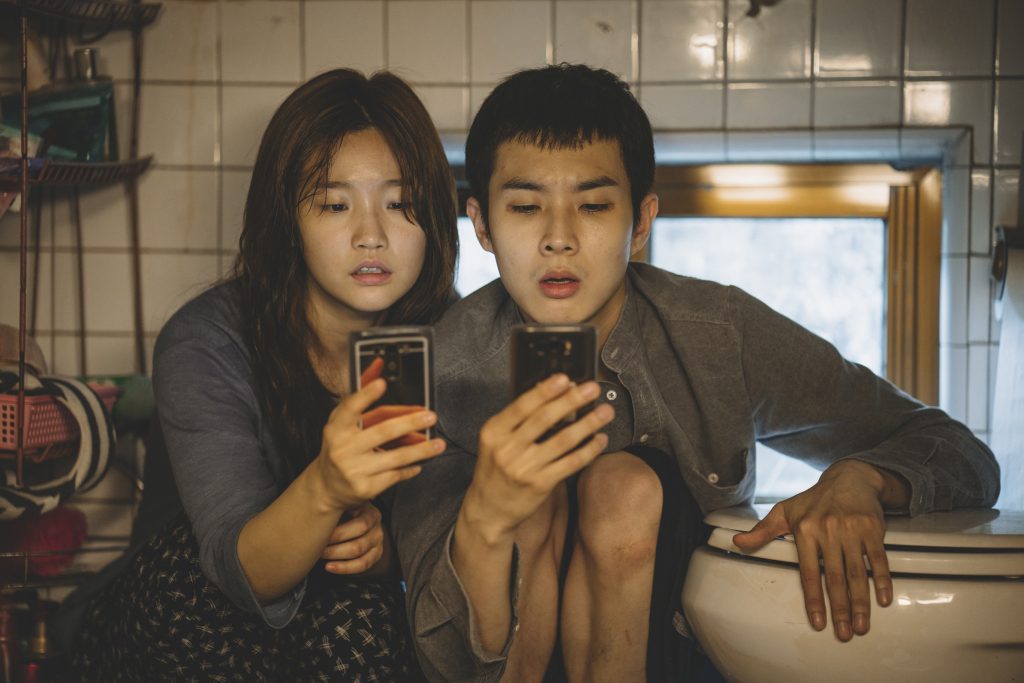
“Corpus Christi,” directed by Jan Komasa (Poland)
“Honeyland,” directed by Tamara Kotevska and Ljubo Stefanov (North Macedonia)
“Les Misérables,” directed by Ladj Ly (France)
“Pain and Glory,” directed by Pedro Almodóvar (Spain)
“Parasite,” directed by Bong Joon Ho (South Korea)*
Best Film Editing

“Ford v Ferrari,” Michael McCusker and Andrew Buckland*
“The Irishman,” Thelma Schoonmaker
“Jojo Rabbit,” Tom Eagles
“Joker,” Jeff Groth
“Parasite,” Jinmo Yang
Best Sound Editing

“Ford v Ferrari,” Don Sylvester*
“Joker,” Alan Robert Murray
“1917,” Oliver Tarney, Rachel Tate
“Once Upon a Time in Hollywood,” Wylie Stateman
“Star Wars: The Rise of Skywalker,” Matthew Wood and David Acord
Best Sound Mixing

“Ad Astra,” Gary Rydstrom, Tom Johnson and Mark Ulano
“Ford v Ferrari,” Paul Massey, David Giammarco and Steven A. Morrow
“Joker,” Tom Ozanich, Dean Zupancic and Tod Maitland
“1917,” Mark Taylor and Stuart Wilson*
“Once Upon a Time in Hollywood,” Michael Minkler, Christian P. Minkler and Mark Ulano
Best Production Design

“The Irishman”
Production Design: Bob Shaw; Set Decoration: Regina Graves
“Jojo Rabbit”
Production Design: Ra Vincent; Set Decoration: Nora Sopková
“1917”
Production Design: Dennis Gassner; Set Decoration: Lee Sandales
“Once Upon a Time in Hollywood”*
Production Design: Barbara Ling; Set Decoration: Nancy Haigh
“Parasite”
Production Design: Lee Ha Jun; Set Decoration: Cho Won Woo
Best Original Score

“Joker,” Hildur Guðnadóttir*
“Little Women,” Alexandre Desplat
“Marriage Story,” Randy Newman
“1917,” Thomas Newman
“Star Wars: The Rise of Skywalker,” John Williams
Best Original Song
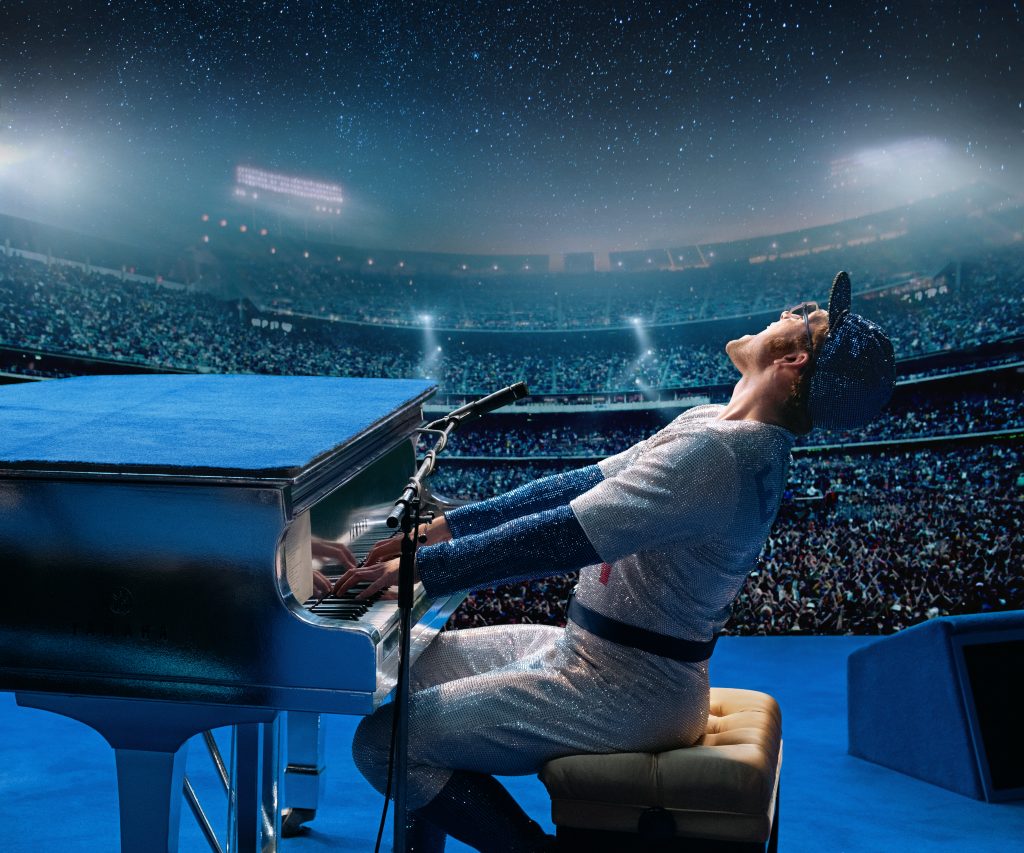
“I Can’t Let You Throw Yourself Away” from “Toy Story 4,” song written by Randy Newman
“(I’m Gonna) Love Me Again” from “Rocketman,” song written by Elton John and Bernie Taupin*
“I’m Standing With You” from “Breakthrough,” song written by Diane Warren
“Into the Unknown” from “Frozen 2,” song written by Robert Lopez and Kristen Anderson Lopez
“Stand Up” from “Harriet,” song written by Cynthia Erivo and Joshuah Brian Campbell
Best Makeup and Hair Styling
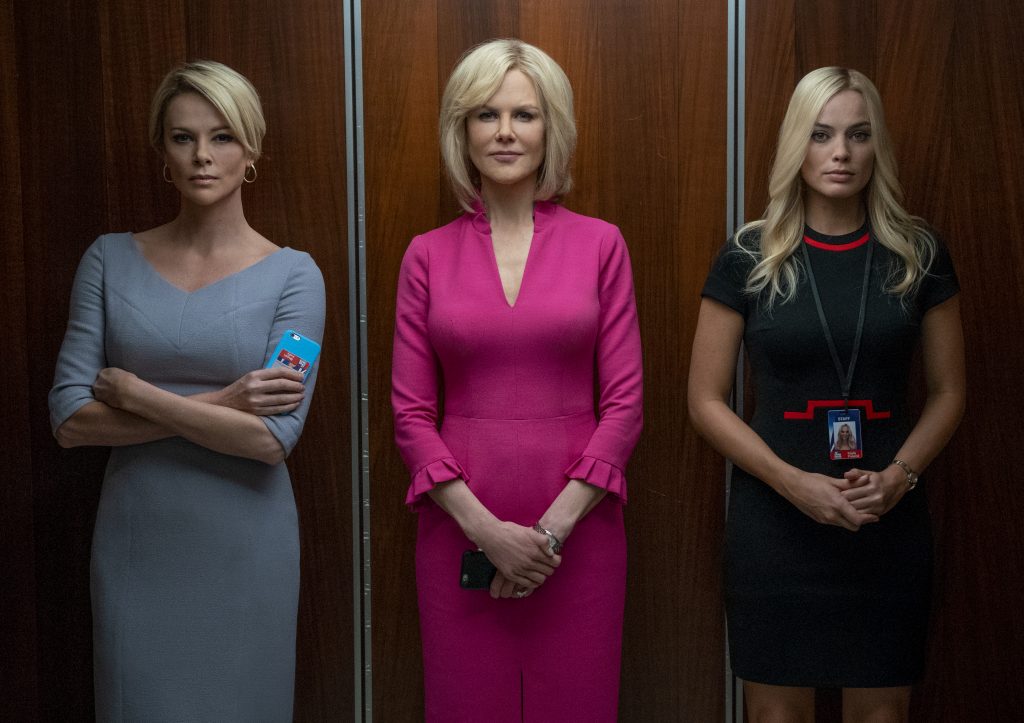
“Bombshell,” Kazu Hiro, Anne Morgan and Vivian Baker*
“Joker,” Nicki Ledermann and Kay Georgiou
“Judy,” Jeremy Woodhead
“Maleficent: Mistress of Evil,” Paul Gooch, Arjen Tuiten and David White
“1917,” Naomi Donne, Tristan Versluis and Rebecca Cole
Best Costume Design
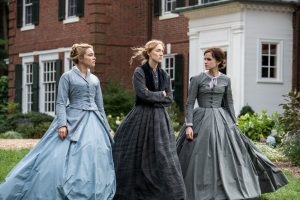
”The Irishman,” Sandy Powell, Christopher Peterson
“Jojo Rabbit,” Mayes C. Rubeo
“Joker,” Mark Bridges
“Little Women,” Jacqueline Durran*
“Once Upon a Time in Hollywood,” Arianne Phillips
Best Visual Effects

“Avengers: Endgame,” Dan DeLeeuw, Russell Earl, Matt Aitken and Dan Sudick
“The Irishman,” Pablo Helman, Leandro Estebecorena, Nelson Sepulveda-Fauser and Stephane Grabli
“1917,” Guillaume Rocheron, Greg Butler and Dominic Tuohy*
“The Lion King,” Robert Legato, Adam Valdez, Andrew R. Jones and Elliot Newma
“Star Wars: The Rise of Skywalker,” Roger Guyett, Neal Scanlan, Patrick Tubach and Dominic Tuohy

